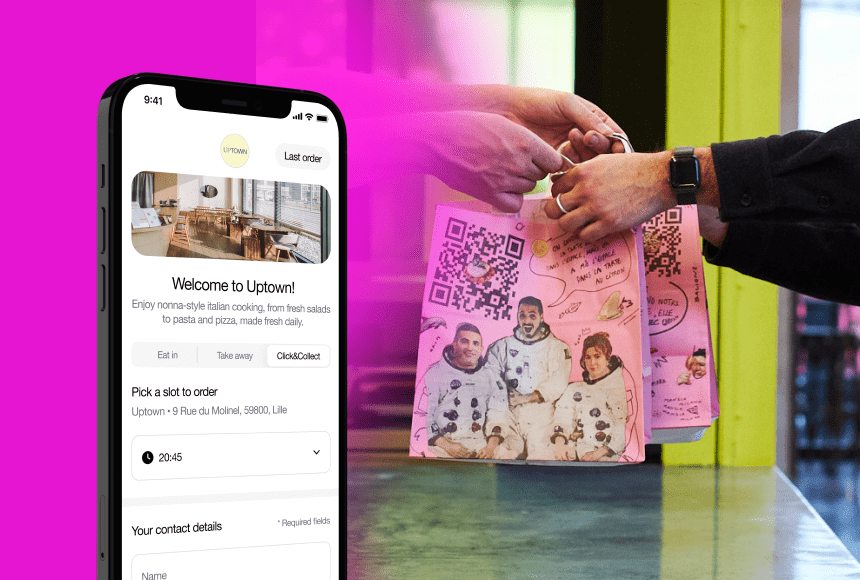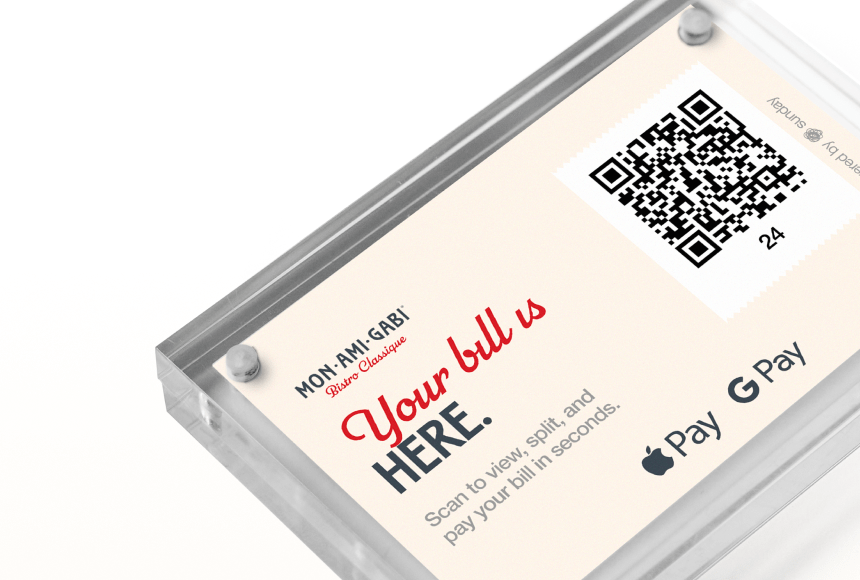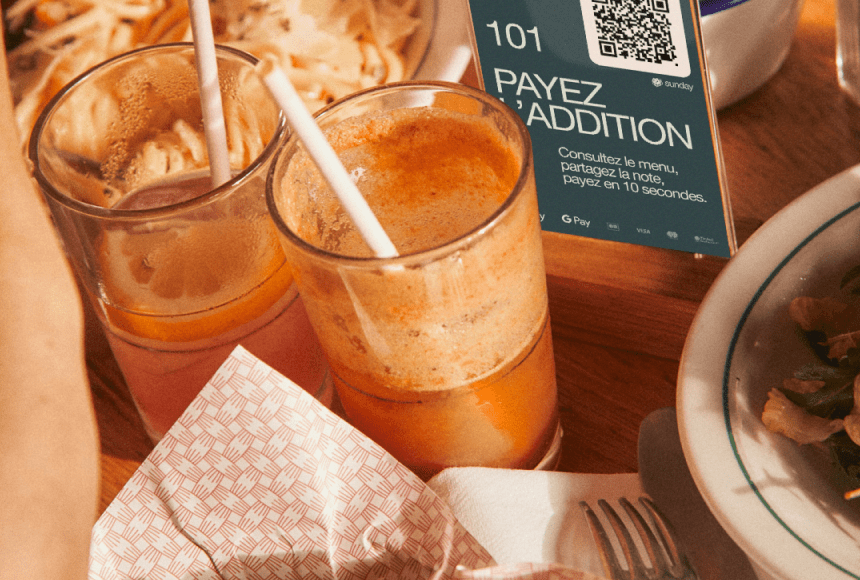
Practical Steps to Launch Your Own Click & Collect Service
Why Click & Collect Is Worth Considering
Imagine a scenario where customers can order their favorite dishes online and drop by your restaurant to pick them up—no fuss, no additional delivery costs, and minimal wait times. That’s the essence of Click & Collect. For busy diners, the convenience is obvious. For you, it’s a chance to expand your revenue stream while controlling more of the customer journey than with third-party deliveries.
But how do you start offering Click & Collect without throwing your entire operation into chaos? From updating your menu to setting up the right payment and pick-up workflow, the process can feel daunting. In this article, we’ll explore the foundational steps for implementing a smooth, profitable Click & Collect strategy that complements your existing restaurant model.
Understanding the Benefits of Click & Collect
Before diving into the “how,” let’s clarify the “why.” While food delivery apps still dominate the off-premises dining market, Click & Collect is rapidly gaining traction. According to recent restaurant industry trends, more consumers now prefer ordering takeout or self-pickup for convenience and cost savings. This shift can work in your favor if you plan correctly.
Key advantages:
- Lower Commissions: Third-party delivery services often take a cut of each sale. Click & Collect bypasses that, leaving you with a better margin.
- Enhanced Control: You set the pickup schedule, portion sizes, and packaging standards to protect food quality.
- Direct Customer Relationships: Without a middleman, you gain valuable data and can engage with your customers directly—whether by upselling at pickup or building loyalty through personalized offers.
- Brand Consistency: You keep the entire experience under your roof, from the online ordering page to the staff greeting at pickup.
If done well, Click & Collect can boost your revenue and increase brand loyalty, all while keeping your overheads more predictable than delivery.
1. Define Your Menu for Takeout Success
Just because a dish wows customers in the dining room doesn’t mean it will travel well in a takeout container. Start by reviewing your existing menu and deciding which items will maintain their taste, texture, and temperature in a short trip from your kitchen to your customer’s car or office.
- Focus on Sturdy Items: Dishes that stay crisp or reheat easily tend to perform better. For example, a saucy pasta might retain its flavor, but a delicate souffle might collapse in transit.
- Consider Packaging: Test your chosen containers for spill resistance, heat insulation, and overall presentation. The packaging is part of your brand image.
- Time to Prepare vs. Time to Pickup: If a dish requires 20 minutes to cook, ensure your ordering system communicates that waiting period to customers. You don’t want a backlog of impatient arrivals.
Once you’ve identified your best candidates, create a streamlined Click & Collect menu. Fewer choices reduce complexity and help your kitchen handle orders more efficiently, leading to fresher food and happier customers.
2. Set Up a User-Friendly Ordering System
The hallmark of a great Click & Collect experience is an easy-to-navigate interface—whether that’s on your restaurant’s website, a mobile app, or a custom link you share via social media. Think about the steps a customer must go through: browsing dishes, selecting options, specifying pickup time, paying, and receiving an order confirmation. Each step should feel seamless.
Here’s how to streamline it:
- Simple Layout: Use clear categories (Starters, Mains, Desserts) and minimize unnecessary clicks. Customers should reach the checkout quickly.
- Accurate Time Estimates: If you’re swamped on a Friday night, your system should reflect a realistic pickup time. Overpromising leads to frustrated diners.
- Integrated Payment: A solution like sunday can let customers pay digitally, saving them (and you) precious minutes at pickup. Confirm your system also accepts contactless payments if customers choose to pay on-site.
By prioritizing ease of use, you encourage more online orders and ensure that those who order once will likely return.
3. Coordinate Your Back-of-House Workflow
One of the biggest pitfalls of launching Click & Collect is underestimating its impact on your kitchen. If you currently handle dine-in, delivery, and bar service, you’re already juggling multiple streams. Adding Click & Collect means creating a dedicated process for these orders to avoid confusion.
What does this look like in practice?
- Separate Queues: Ensure your staff knows how to differentiate between online takeout orders and dine-in tickets. You may use color-coded printouts or separate screens for each order type.
- Assign Specific Staff: Depending on volume, you might place one cook in charge of assembling to-go meals, or you might rotate the responsibility among the team.
- Prep & Staging Area: Set aside a small, organized station near the exit or pickup window. Keep paper bags, labels, and condiments neatly arranged so staff can quickly package and hand off orders without rummaging through your entire kitchen.
Clarity is key. Clear roles and processes help prevent mistakes like mixing up a to-go burger with a dine-in burger, or forgetting that a certain dish needs an extra sauce packet.
4. Design an Efficient Pickup Zone
Picture a busy Saturday night. Cars pull into your parking lot or line up outside your storefront to grab their orders. If you’ve prepared well, each pick-up feels fast and frictionless. If you haven’t, the scene can devolve into confusion—your staff racing around to find the right order, customers waiting impatiently, phone calls piling up.
To avoid that chaos:
- Create Clear Signage: Whether you have a dedicated parking spot or a side door, mark it with bold signs. Indicate exactly where customers should go to collect their meals.
- Offer Contactless Handoffs: For customers who prefer minimal contact, set up a small table or shelf where pre-labeled orders can be placed. That way, they can grab and go without extra interaction.
- Streamline Communication: Let customers know what to do when they arrive: call a designated number, send a text, or simply walk in. You don’t want them guessing.
A well-thought-out pickup zone not only saves time but also conveys professionalism and care for your guest’s experience.
5. Promote, Promote, Promote
Even the most user-friendly Click & Collect service won’t succeed if customers don’t know about it. Once you’re confident in your setup, shout it from the rooftops—or at least from your social media channels, website banners, email newsletters, and in-restaurant signage.
- Social Media Teasers: Post a short video or photo showing how quick and easy your new service is. Invite followers to try it and share their feedback.
- Email Campaigns: Send a brief announcement to your newsletter subscribers. Include a limited-time discount code to encourage first-time users.
- Printed Materials: If you still use printed receipts, add a small note that says, “Save time—order online and pick up in minutes!” The same message can go on table tents or even window decals.
Promotion is a continuous process. Keep mentioning your Click & Collect option until it becomes second nature for your customers to consider online ordering whenever they crave your cuisine.
6. Simplify Payment and Tipping
One of the less glamorous aspects of Click & Collect is the payment process—yet it can make or break a customer’s perception of convenience. When your diners arrive to pick up an order, do they have to stand in line and swipe a card? Will they receive a digital receipt or a paper one? These details matter.
- Enable Seamless Prepayment: Let guests pay during the online ordering process. Not only does this speed up pickup, but it also encourages tipping. Solutions like sunday can integrate tipping prompts, so diners don’t have to fiddle with tip calculations on-site.
- Accept Multiple Payment Methods: Offer credit card, mobile wallet, or even gift card options. The more choices, the more likely customers find an option that suits them.
- Automate Receipts: Email or text receipts as soon as the transaction processes. It’s environmentally friendly and prevents receipt clutter at your pickup station.
Smooth payment flows translate to shorter waits and happier guests. It also lessens the chance of staff members having to scramble at the register during peak times.
7. Gather Feedback and Iterate
Think of Click & Collect as a living, breathing service that evolves with your customers’ needs. The moment it goes live, pay attention to what works well and what doesn’t. You can gather feedback through simple methods:
- Follow-Up Emails: After a customer picks up an order, send a short survey asking for their experience. Keep it brief so more people respond.
- In-Person Checks: If you or a manager are around, ask a quick question like, “How was the pickup process today? Any improvements you’d suggest?”
- Online Reviews: Monitor your social media comments and review sites. Complaints about long wait times or missing items can guide you to tweak your process.
Use this information to refine everything from menu items that don’t hold up well to how your staff packs orders. Small improvements can have a big impact on repeat business.
8. Consider Offering Extras
Over time, you can add features to make your Click & Collect even more appealing. Perhaps that means letting people add grocery staples like fresh bread, sauces, or homemade condiments. Or maybe you create a subscription package for regular lunch pickups. These extras can distinguish you in a crowded market and lure customers back for something they can’t get elsewhere.
- Meal Kits: Provide partial-prep dinner kits for families who love your flavors but want to do some cooking at home.
- Wine or Beverage Pairings: If regulations allow, let customers pick up wine or craft beer along with their meal. This can significantly boost your average order value.
- Loyalty Programs: Offer a free appetizer or dessert after a certain number of pickups. These small rewards encourage repeat orders.
Experiment with add-ons based on your brand identity and kitchen capacity. Just ensure the extras don’t slow down your core process—speed and convenience remain top priorities.
Spotlight: How sunday Fits In
While you can certainly piece together a Click & Collect solution using multiple tools, sunday offers a streamlined route. Not only can it facilitate at-table payment and quick settlements, but it also integrates well with online ordering scenarios. That means you can unify your in-house dining, pickup, and even tipping processes under one platform.
Why does this matter? Consistency. Your front-of-house staff only needs to master one interface, and your customers enjoy a familiar, reliable payment experience whether they’re sitting at a table or grabbing their order to go.
Watch Your Revenue Grow
Click & Collect isn’t a guaranteed path to doubling your income overnight, but it can be a potent addition to your restaurant’s revenue streams. Customers appreciate the flexibility of choosing when to eat, and you appreciate the reduced costs and direct relationship it fosters. Even if you start small—like offering Click & Collect just for lunch or for certain menu items—you can scale up once you see the positive impact on your bottom line.
Keep in mind that success hinges on simplicity and communication. From setting a realistic pickup time to ensuring your packaging is top-notch, every detail affects whether a customer returns. And return they will, if you make the process delightful and stress-free.
So, if you’ve been flirting with the idea of adding Click & Collect to your restaurant’s offerings, consider this your sign. With careful planning, clear communication, and the right tech solutions, you’ll be well on your way to a thriving pickup service that complements your existing business—one that keeps customers satisfied and your kitchen humming with efficiency.
Find out more today
Drop us your details below and we’ll reach out within the next 24h
The click and collect solution integrated with your POS.
Let your customers order directly from you, where they are.




